Using Active Reading Strategies with Visual Arguments
As you learned in Chapter 2, being a critical reader involves responding actively to the text of an argument. The active reading strategies that you practiced in Chapter 2—previewing, close reading, highlighting, and annotating—can also be applied to visual arguments.
When you approach a visual argument, you should look for clues to its main idea, or message. Some visuals, particularly advertising images, include words (sometimes called body copy) as well, and this written text often conveys the main ideas of the argument. Apart from words, however, the images themselves can help you understand the visual’s purpose, its intended audience, and the argument that it is making.
COMPREHENSION CLUES
The individual images
The relative distance between images (close together or far apart)
The relative size of the images
The relationship between images and background
The use of empty space
The use of color and shading (for example, contrast between light and dark)
If people are pictured, their activities, gestures, facial expressions, positions, body language, dress, and so on
85
APPEALS: LOGOS, PATHOS, AND ETHOS
As you study a visual argument, you should consider the appeal (or appeals) that the visual uses to convince its audience.
An ad produced by Mothers Against Drunk Drivers (MADD) that includes statistics about alcohol-
related auto fatalities might appeal to logic (logos). Another MADD ad could appeal to the emotions (pathos) by showing photographs of an accident scene.
Still another ad could appeal to authority (ethos) by featuring a well-
known sports figure warning of the dangers of drunk driving.
(For more on these appeals, see Logos, Pathos, and Ethos in the Introduction.)
The following illustration makes a strong visual argument, using the image of a young child holding a mutilated teddy bear to make an emotional appeal to those concerned about children’s exposure to television violence.
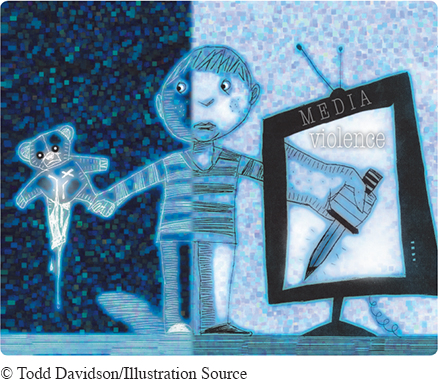
86
The visual above includes three dominant images: the child, the teddy bear, and a giant TV screen projecting an image of a hand holding a knife. The placement of the child in the center of the visual, with the teddy bear on one side and the knife on the other, suggests that the child (and, by extension, all children) is caught between the innocence of childhood and the violence depicted in the media. The hand holding the knife on the television screen is an extension of the child’s actual arm, suggesting that the innocent world of the child is being taken over by the violent world of the media.
To emphasize this conflict between innocence and violence, the teddy bear is set against a dark background, while the TV, with its disturbing image, is paradoxically set against a light background. (The image of the child is split, with half against each background, suggesting the split between the two worlds the child is exposed to.) The child’s gaze is directed at his mutilated teddy bear, apparently the victim of his own violent act. The expression on the child’s face makes it clear that he does not understand the violence he is caught up in.
Because it treats subject matter that is familiar to most people—
The visual’s purpose is somewhat more complex. It could be to criticize the media, to warn parents and others about the threat posed by media violence, or to encourage the audience to take action.
Now, turn your attention to the two graphs on the facing page. These graphs, which appeared in the 2012 Washington Post article “Ten-
The graphs use a simple, open design and a minimum of words to make their information accessible to most people who will look at them. The main idea, or message, they convey is summarized by the article’s thesis statement, supporting the idea that contrary to expectations, the data suggest “a slight downward shift in violence as video game consumption increases.”
This idea is likely to come as a surprise to most people, who might assume a causal relationship between violent video games and violent crime. However, as the graphs show, this is not the case. Thus, the graphs serve as a clear refutation of a commonly held assumption. Because the two graphs (and the article in which they appeared) present information that is intended to contradict the audience’s probable assumptions, their purpose seems to be to convince people to change the way they look at video games.
87

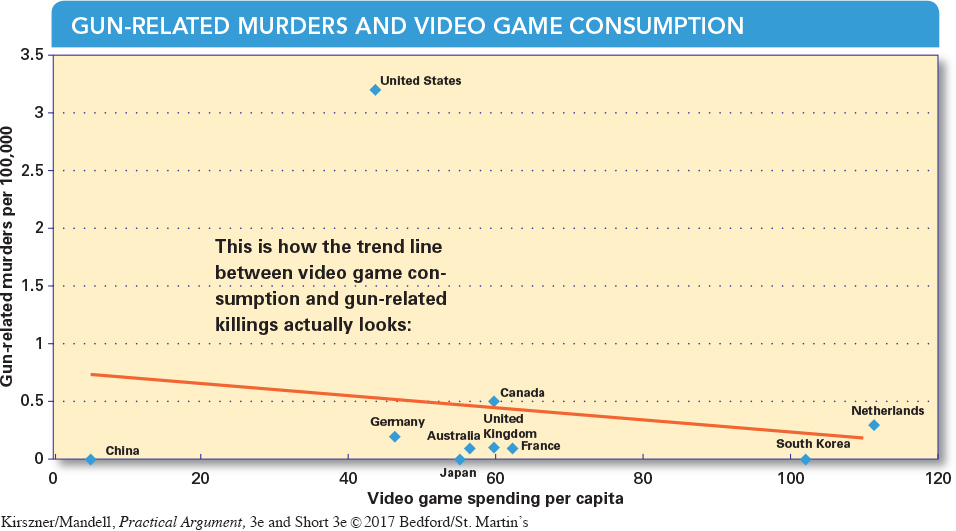
EXERCISE 3.1
Look at the visuals that follow, and then answer the questions at the end of the page.
88
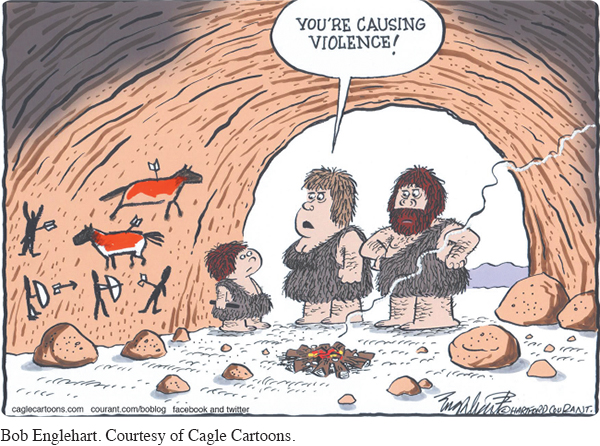

89
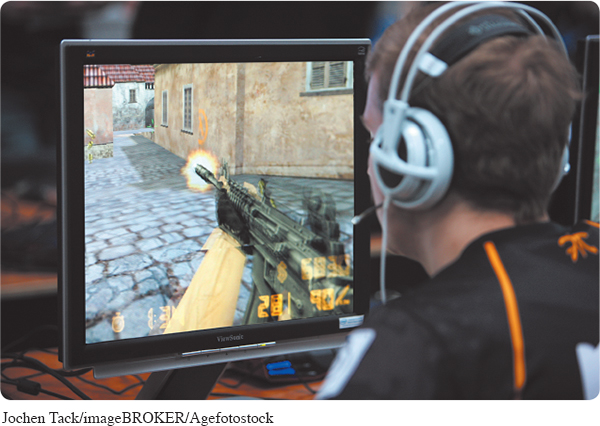
A study in the British Medical Journal indicated that two thirds of cartoon movies included the deaths of characters, compared with half in adult films. Parents are five times as likely to die in cartoon films compared with adult dramas.
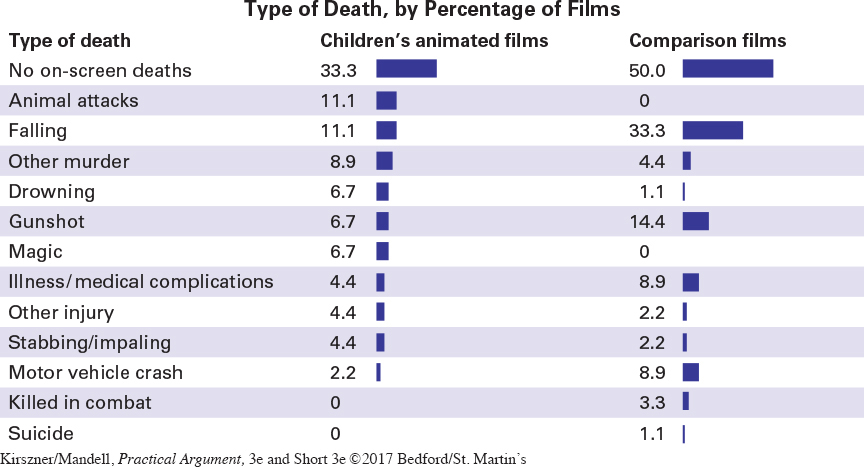
90

91

Identifying the Elements of a Visual Argument
Do you see all of the visuals as arguments, or do you think some were created solely to present information?
What main idea, or message, does each visual communicate? State the main idea of each visual in a single sentence.
What elements in each visual support this main idea?
If the visual includes words as well as images, are the words necessary?
What purpose does each visual seem designed to achieve?
What kind of audience do you think each visual is aimed at?
Does the visual appeal primarily to logos, pathos, or ethos?
Do you think the visual is effective? That is, is it likely to have the desired effect on its intended audience?